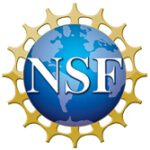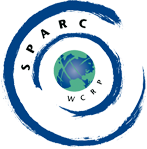During 27-29 May 2013 at Stony Brook University, New York, USA, 19 scientists from 9 different countries took part in the Workshop on Research Applications of High Vertical Resolution Radiosonde Data, sponsored by the US National Science Foundation and SPARC. The workshop had three objectives:
- To provide a forum for research using high vertical resolution radiosonde data
- To explore and encourage new applications of these data
- To explore the possibility of expanding the availability of international high vertical-resolution data for use by the international research community.
Meeting Outcomes
It was proposed that a new high vertical-resolution sounding data (HVRSD) archive be established to transition data collection and access from national meteorological services and PI-based research projects to centralized long-term institutional data stewardship with the ultimate objective of a global database of HVRSD similar to the Integrated Global Radiosonde Archive. The archive would also be expanded to include, for example, campaign and ship radiosonde data and other sounding techniques such as dropsondes and ozonesondes.
View a summary sheet of the vision for the HVVRD Archive.
A new SPARC activity was proposed to foster new research applications and provide advocacy and guidance for the HVRSD archive. The proposed project on fine-scale atmospheric structures and processes would encompass all high-vertical resolution sounding techniques while promoting scientific investigations through further workshops and meeting sessions, coordinated communications and initiating collaborative publications, reviews and regional studies.
View a summary sheet for the SPARC activity proposal.
View the workshop programme including access to pdfs of selected presentations.
Read the workshop meeting report published in Eos.
Access high vertical resolution radiosonde data from United States and other regions.
Background
High vertical resolution radiosonde data (HVRRD), which began to become available in the early 1990s, have had value in gravity wave and tropical wave studies (Hamilton and Vincent, 1995). For example, routine analysis of upper troposphere-lower stratosphere temperature and wind has led to better understanding of seasonal and geographic variations in gravity wave activity and spectral characteristics.
Since then, HVRRD have been exploited for much broader research applications in fields where HVRRD provide the highest resolution available for observational parameters. With recent upgrades to the National Oceanic Atmospheric Administration’s (NOAA) network of U.S. upper air stations providing yet higher vertical resolution, new research applications of operational sounding data are emerging. A repository of long-term, routine, very high resolution in situ observations of fundamental atmospheric parameters, including temperature, water vapor, and wind velocity, is now available, for which the full research potential has yet to be realized (Love and Geller, 2012)
Conveners
Marvin Geller – marvin.geller@stonybrook.edu
Peter Love – peter.love@aad.gov.au
Sponsored by

![]()

